Meteora is a place that you simply have to explore on foot. The valley is connected by a network of 35 kilometres of paths and trails, and there are surprises at every turn ranging from hermit caves and monastic ruins, to strange rock formations and giant rock boulders frequented by rock climbers. For me, hiking in Meteora turned out to be one of the highlights of my visit, not only because I got to see out-of-the-way monasteries that I would have otherwise missed, but also because I got to hear the local folklore that brought this destination to life.
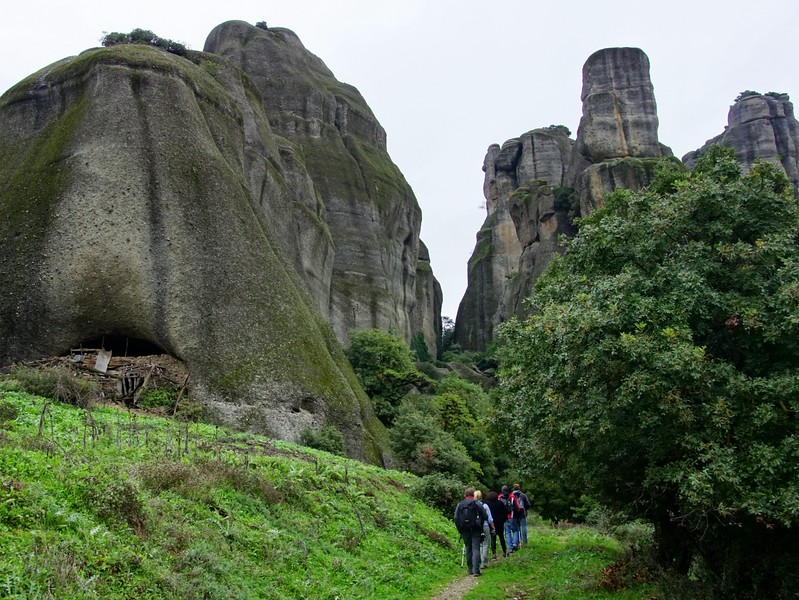
Hiking in Meteora
I went on 2 different hikes while in Meteora: one was a hiking tour through the Rock Forest that finished with a visit to the Grand Meteoro, and the other was a hiking tour of Holy Spirit. While the two hiking routes had their differences, what did not change was our guides’ unwavering passion for Meteora and the storytelling that allowed us, travellers, to connect with the places we visited.
The following is a collection of stories that I heard hiking in Meteora; they are stories of miracles, stories of theft, and some are stories that made me scratch my head and wonder, “Could that have really happened or did this just get embellished over centuries of storytelling?” Either way, this is the narrative that’s alive and well in Meteora:
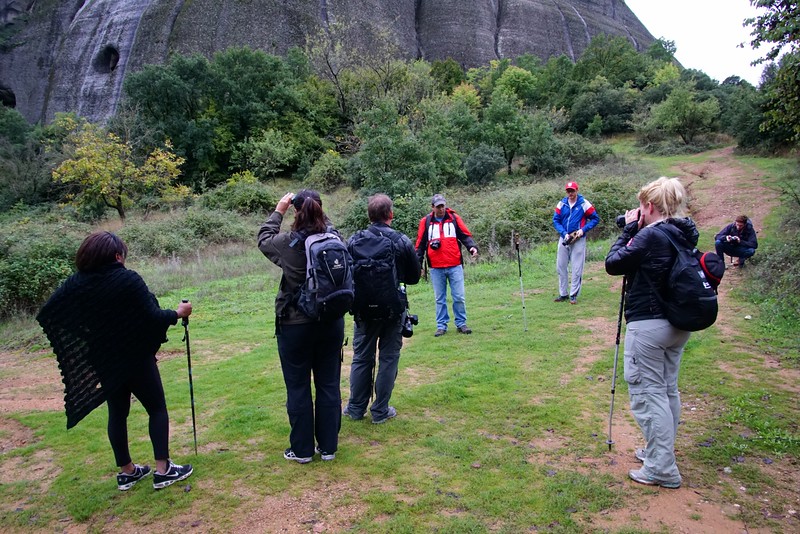
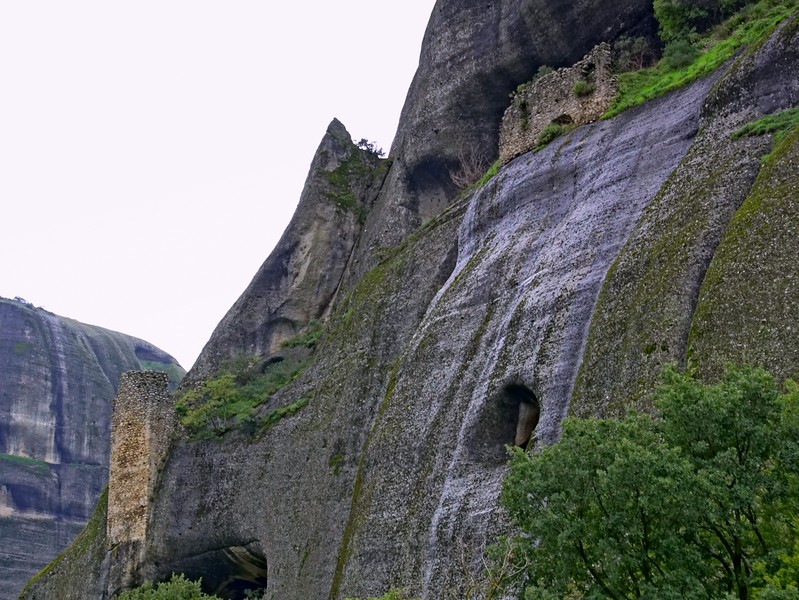
The girl who was kidnapped by monks
It’s hard to see at first glance, but if you look closely at the photo above you’ll notice the ruins of the Pantokrator Monastery. How this monastery came to be nothing more than a pile of rubble, is a fascinating story.
Apparently, there was once a very beautiful girl who lived in the local village, and she was such a sight to behold that even a group of monks who had recently arrived in the area took notice. One day the girl mysteriously disappeared from her home, and despite searching high and low around the town, neither her family nor the villagers couldn’t find her.
It wasn’t until a few days later when a local shepherd was walking around the base of the monastery that he saw a shoe fly down from the sky. It was the shoe of the beautiful girl who had been missing! The shepherd rushed back to the village waving the shoe in hand to confirm his findings, and sure enough, everyone agreed that shoe belonged to the girl.
Angered to have had one of their women stolen from them, the men of the village rallied together and went to the foot of the monastery where they demanded the release of the girl. The monks played dumb and insisted they were not keeping a woman prisoner, but the villagers weren’t buying the story and they warned the monks that they’d have trouble to pay…
One version of the story says the girl was then released, while another suggests that the villagers returned with canons and started shelling the monastery and that’s why today it sits in ruins. As for the girl, she was reunited with her family.
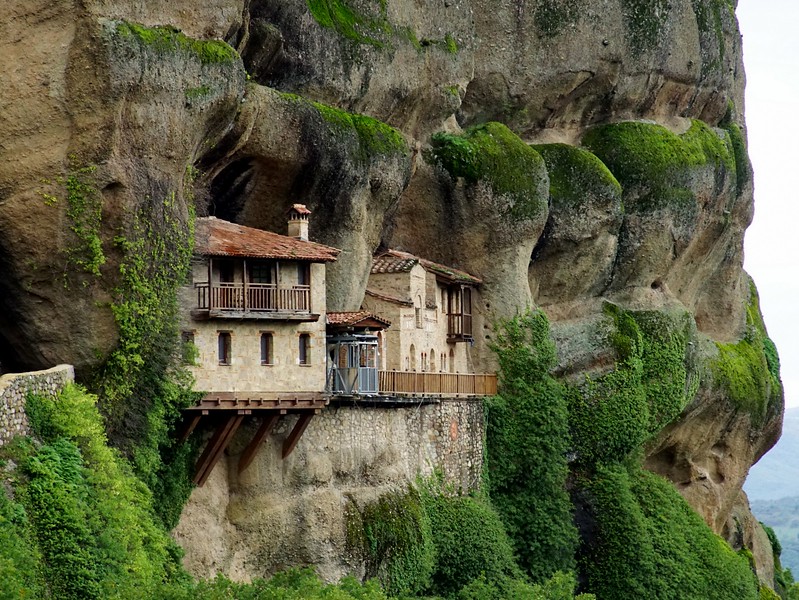
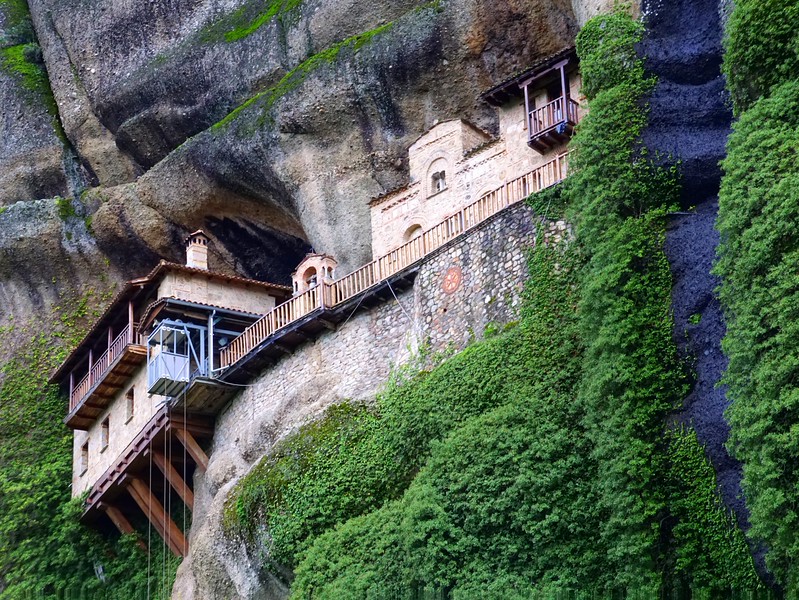
The family who stole the monks’ monastery
Unlike the previous story, it appears that while some monks were causing trouble around town, others were being victimized.
The next story I heard was that of the Ypapanti Monastery. The story starts out with the local monks of the monastery going out for the day – they may have gone out to visit monks at another monastery, or they may just have been out running errands…no one really knows – but what we do know is that when the monks finally returned to their home at the end of the day, they found that it had been taken over by a family of squatters! Yes, an entire family had moved in and taken over their home while they were out for the day.
It appears that this family had some very strong and fierce young men, which left the monks with very few options. The monks did not have the force to challenge the squatters, and so they were forced to retreat while the new guests presumably settled in, started rearranging furniture, and made themselves cozy.
The crazy part is that the Ypapanti Monastery would remain in the hands of the squatters for the next 89 years, and that’s written in the local records.
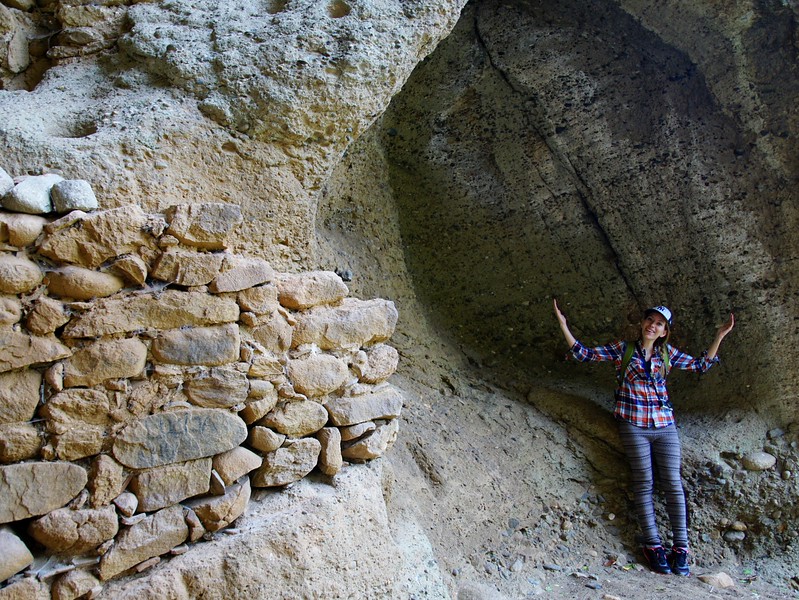
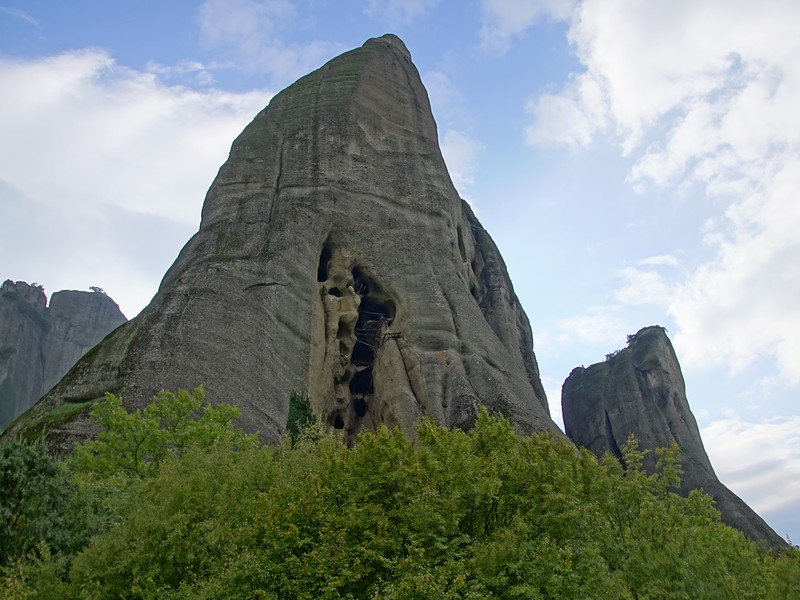
The monks who were thrown in jail
Then for another surprise, we visited a jail for monks, but this wasn’t any ordinary jail. As you can see in the photo above, this particular jail was built into a cave on the rock and it was meant to hold “the naughty monks”.
I tried pressing my guide with questions as to what kind of crimes these monks had actually committed, but I couldn’t get a straight answer, though judging from the previous stories we heard on the hike, kidnapping sounded like one likely offence. Our guide also told us that disobedience was one way to end up in this monk jail, as any form of undermining authority by the younger monks could’ve upset the whole balance of the leadership.
I didn’t get to hear any stories of individual monks here, but I did learn that this cave could hold a maximum of 14 monks, with each jail cell built on a wooden ledge. One thing’s for sure – the view from the jail cell was not half bad!
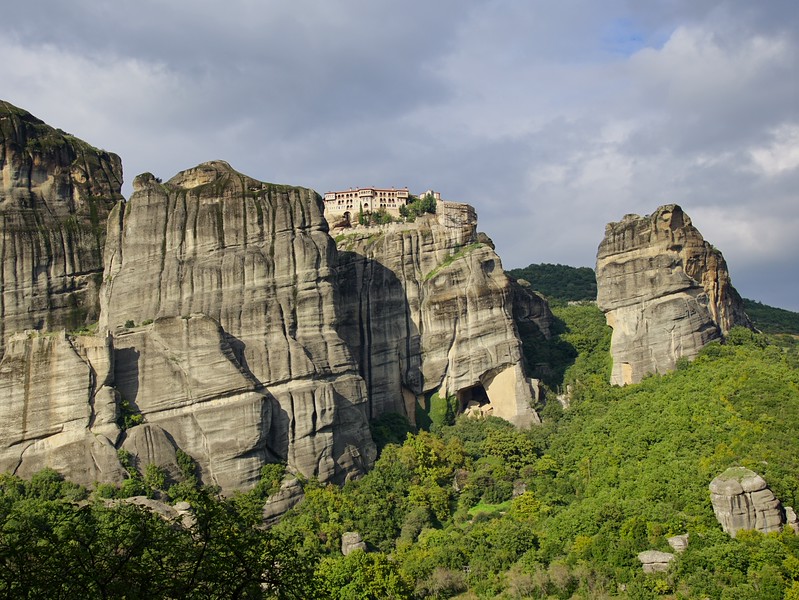
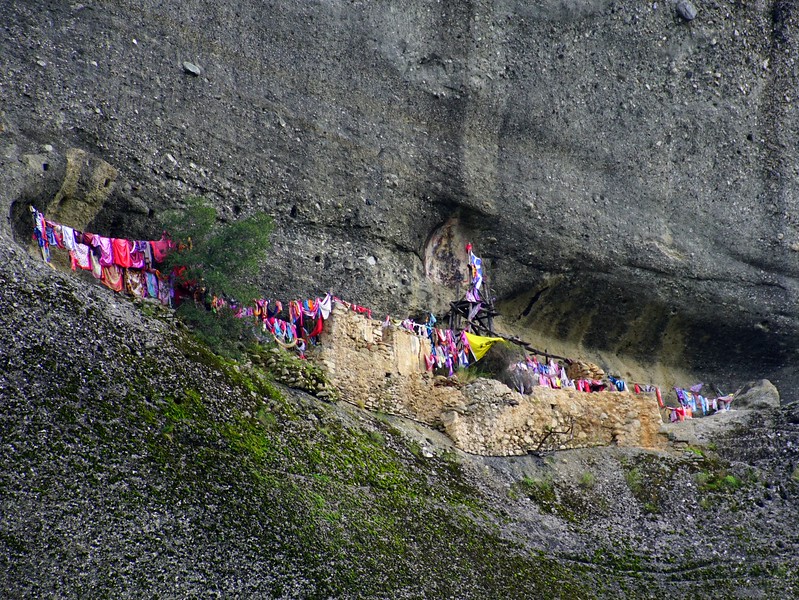
Bright scarves for St. George
And lastly, a story that has not only infused local tradition but that can still be seen alive to this day.
The story goes that a newlywed Turkish couple was living in the village, when one day the woman’s husband was chopping down a tree and it fell on him injuring him so severely, that it appeared he was at the gates of death. Seeing the distress of the woman, the local villagers urged her to pray to St. George for a miracle (it was after all St. George’s Day), and so, desperate to save her beloved husband, the woman removed her headscarf and offered it to St. George in prayer.
Soon after, the husband made a recovery, everyone rejoiced over the miracle, and a new tradition was born.
That is why every year on St. George’s Day, the young men from the local village climb to the cave of Agios Georgios Mandilas to collect the scarves that were brought up as offerings the previous year and replace them with new ones. To an outsider, it would appear that this event is all about bravado, but the tradition stems back many centuries ago.
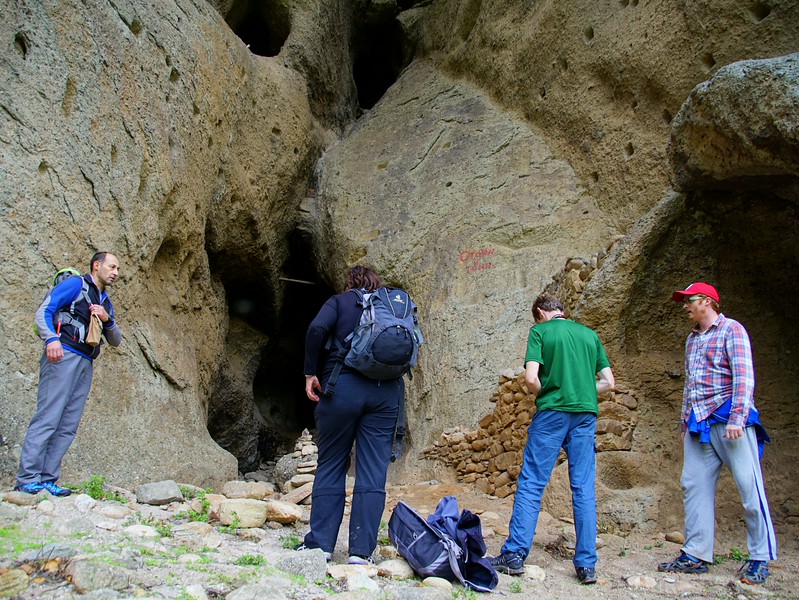
And that’s just a little snippet of some of the places we visited and the stories we heard on our hike through Meteora, Greece.
As it happens when stories are passed down orally generation to generation, at this point, it’s hard to say what’s truth, what’s myth, and what’s been embellished over the years. However, I can tell you that hearing these stories brought the whole landscape to life and it helped me appreciate the destination in a different way.
I would’ve never heard these local stories had I just been zipping around from monastery to monastery in a car – at least not the stories about the kidnapping monks or the naughty monks thrown in jail! – so if you want to hear all the juicy gossip from centuries past, consider a hiking in Meteora with a local guide. That’s the best way to do it!
🏞️ Hiking Meteora Adventure Guide: Essential Tips, Expanded Folklore & Trail Inspiration
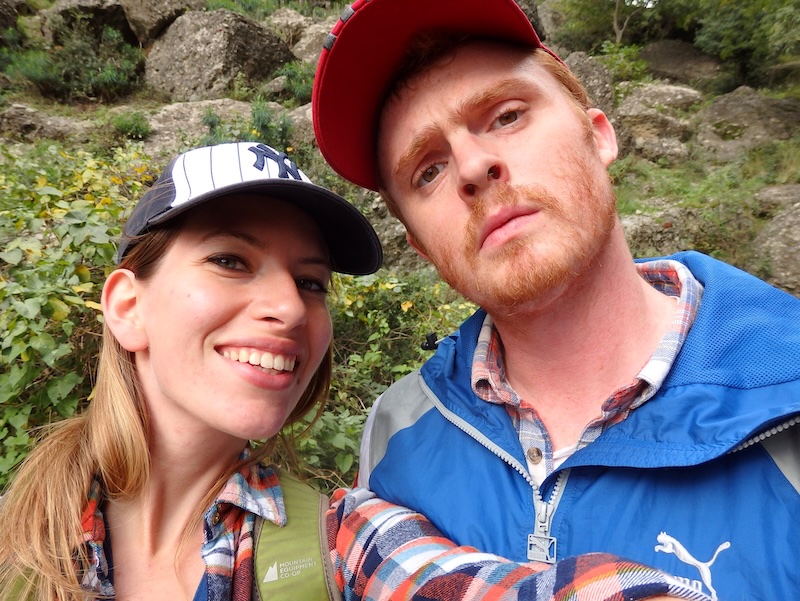
🗺️ Why Hiking Meteora Is So Specia
If you only experience Meteora from the roadside viewpoints, you’re missing the magic. Walking the ancient trails among towering pinnacles and centuries-old caves, you become part of the living story of this place. Here is a land where geology, monasticism, and legend blur together.
Whether you’re a seasoned hiker or a casual explorer, the network of footpaths here is accessible to all.
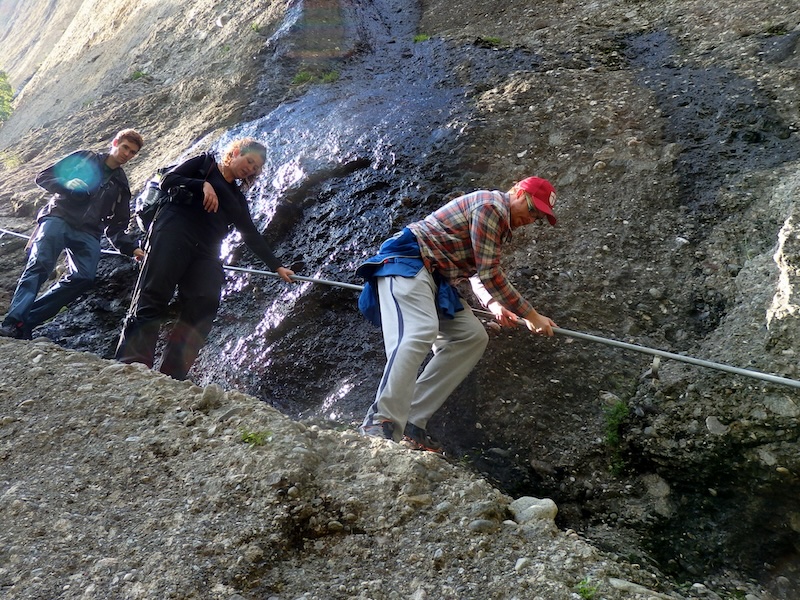
👣 Choosing the Right Trail: Hiking Routes for Every Adventurer
Meteora offers a variety of hiking options, from gentle walks to ambitious full-day treks. Here’s a guide to some of the most rewarding routes:
1. The Grand Monasteries Circuit
- Distance: ~8 km (loop)
- Highlights: Connects the six active monasteries, with panoramic vistas, forested paths, and iconic photo stops.
- Best for: First-time visitors eager to see the main sights with some solitude between stops.
2. Rock Forest & Holy Spirit Trail
- Distance: ~6 km (out-and-back)
- Highlights: Winding through ancient woodlands, past weathered boulders and lesser-known ruins, this trail leads to Holy Spirit Monastery—one of the earliest sites, perched atop a dramatic pillar.
- Why Go: It’s a step into Meteora’s “shadow realm,” away from the crowds, where nature and legend mingle.
3. Ypapanti Monastery & Abandoned Hermitages
- Distance: 7–10 km depending on start point
- Features: Visit the mysterious Ypapanti Monastery, see abandoned cave dwellings, and enjoy quiet meadows where wildflowers bloom in spring.
- Bonus: You may stumble upon a local shepherd or two (with stories of their own).
4. Sunrise/Sunset Rock Walks
- Short & Sweet: Some of the best golden hour views can be reached within 30 minutes from Kalambaka or Kastraki—ideal for non-hikers seeking a taste of Meteora’s magic.
Tip: Bring hiking poles for steep descents, especially if you’re not used to rocky Mediterranean trails. Shoes with decent grip are a must, and don’t forget a refillable water bottle—springs are scarce!
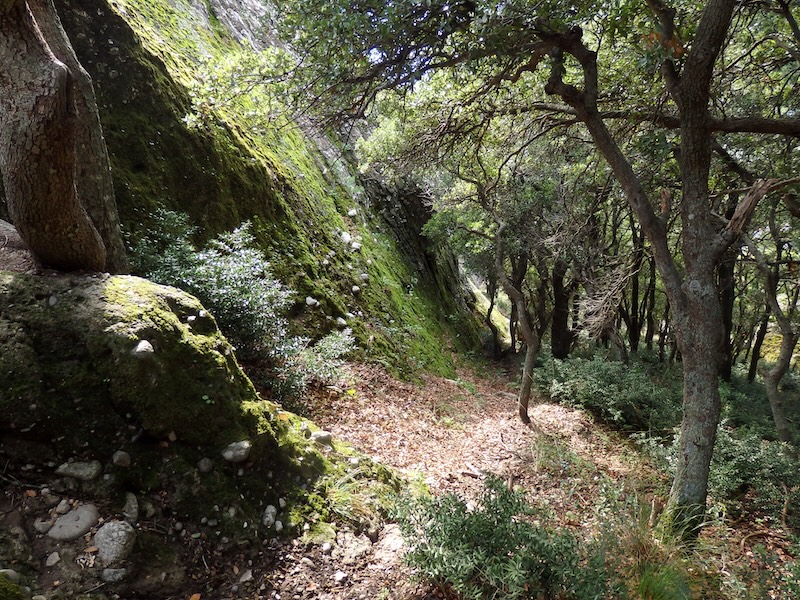
Choosing the Right Trail for Your Legs
| Route | Distance / Time | Elevation Gain | Why Hike It? | Difficulty* |
|---|---|---|---|---|
| Rock Forest Loop (Kastraki → Moni Megalo Meteorou → Varlaam → Back) | 7 km / 3–4 h | 350 m | Classic “monastery reveal” views, Ypapanti detour, cool shade in summer | ●●○○ |
| Holy Spirit & Jail Cave | 5 km / 2–3 h | 280 m | Hermit holes, monk jail, scarf‑draped St George cave | ●●●○ |
| Sunset Trail (Psaropetra Lookout) | 3 km return / 1.5 h | 120 m | Flaming‑orange cliffs & monasteries glowing at golden hour | ●○○○ |
| Kalambaka → Great Meteoron Pilgrim Path | 10 km / 4–5 h | 500 m | Medieval stone staircase, quiet forest, ends at the biggest monastery | ●●●○ |
| All‑day Grand Circuit (mix of the above + Adrachti pinnacle) | 15 km / 6–7 h | 650 m | Every major vista + hidden caves, requires map savvy | ●●●● |
*Difficulty is subjective: ● Easy stroll, ●● Moderate, ●●● Steep / uneven, ●●●● Scramble sections.
🧭 Trail Navigation & Guided Tours
Self-guided or with a local expert?
- Self-Guided: Trails are generally well-marked, and GPS apps like Maps.me or AllTrails have most paths mapped.
- Guided: Hiring a local guide brings the folklore to life, opens doors to off-the-map ruins, and offers safety on trickier routes. You’ll also hear the “real” stories not found in any guidebook!
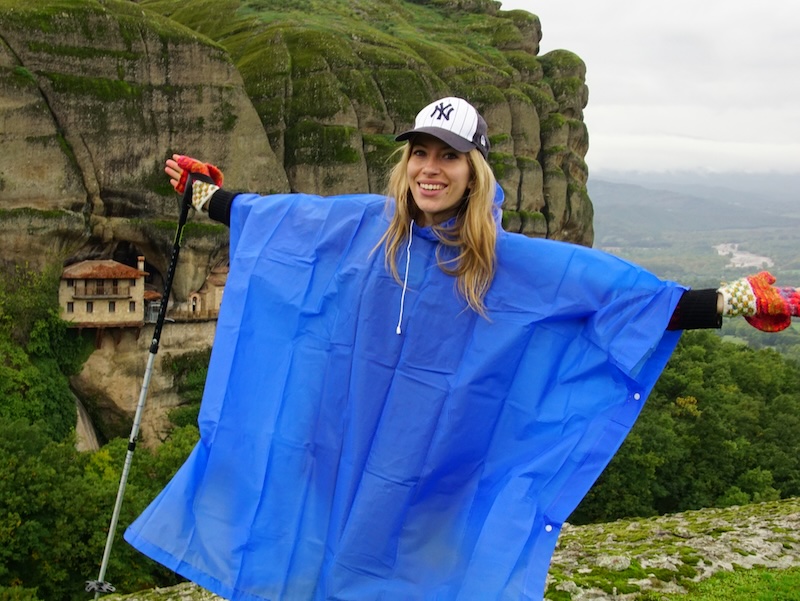
📋 Packing Checklist for Meteora Hiking
| Item | Why You Need It |
|---|---|
| Lightweight daypack | For snacks, water, sunscreen, and a hat |
| Sturdy shoes | Uneven, rocky paths—grip is essential |
| Layers | Mornings are chilly, afternoons hot |
| Rain jacket | Spring/fall can bring quick showers |
| Camera/binoculars | For panoramic shots & spotting vultures |
| Scarf | For monastery visits (shoulders covered) |
| Trail snacks | Limited options on the trails |
🏛️ Monasteries, Hermitages & Hidden History
Hiking in Meteora is as much about culture and spirituality as it is about nature. Beyond the main monasteries, the valleys are riddled with:
- Hermit caves where monks withdrew for silent contemplation
- Cliffside chapels—some only reachable by climbing rope ladders (now used by rock climbers)
- Monk “jails”—as described in your tales above, a testament to the community’s strict discipline (and wild stories!)
Extra Folklore: Legends & Miracles
- The Invisible Ladder: Local legend says some monasteries were built with “invisible ladders” only revealed to the truly worthy. Some villagers still claim to see ghostly shapes scaling the cliffs at night.
- The Healing Waters: Near certain rock springs, you’ll hear stories of miraculous cures—locals still collect water here for blessings.
Tip: Ask older guides for their versions of the stories—each family has a slightly different telling, some with surprising twists or lessons.
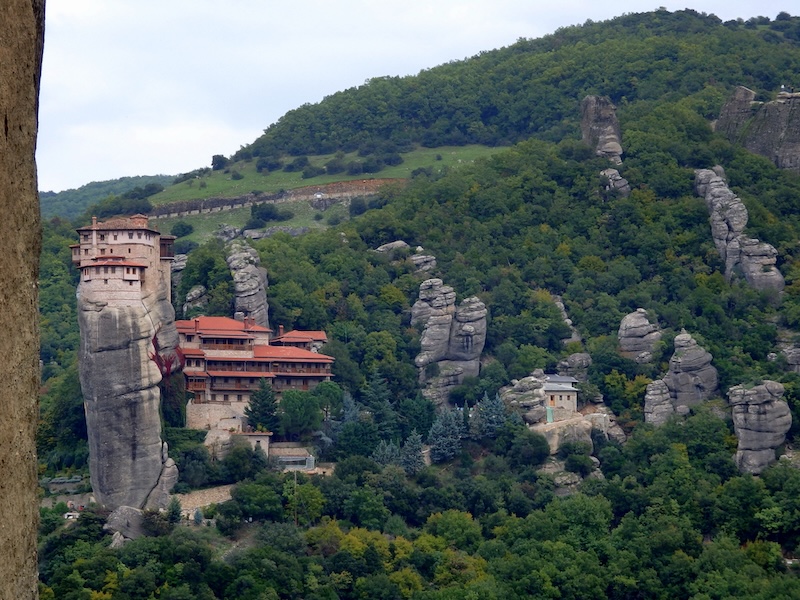
📸 Epic Viewpoints & Photo Spots
Don’t miss these legendary Meteora photo ops:
- Psaropetra Lookout: Perfect for sunset with the monasteries glowing gold.
- Pindos Ridge Views: Offers a dramatic backdrop of the entire valley.
- Ypapanti Monastery (off the beaten path): Often empty except for grazing goats.
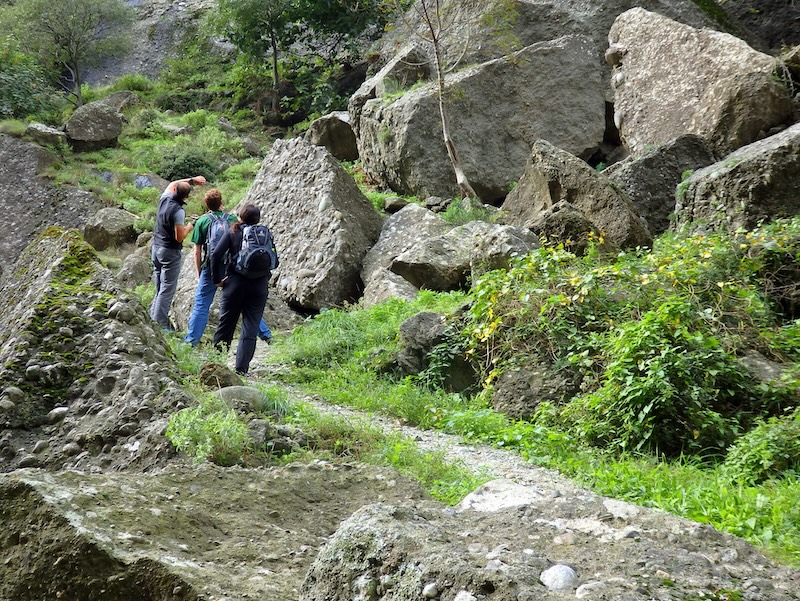
🥾 Responsible Hiking & Local Etiquette
- Respect the monasteries: Shoulders and knees must be covered. Scarves and wrap skirts are usually provided at entrances.
- Leave no trace: Trails are clean and locals are proud. Carry out everything you bring in.
- Say hello: A “Kalimera!” (“Good morning!”) goes a long way with villagers or fellow hikers.
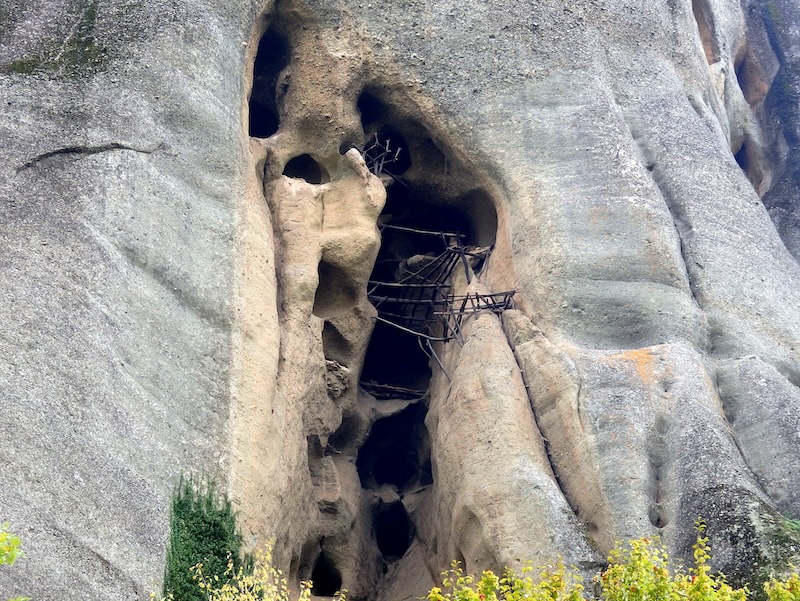
When to Go & What Mother Nature Throws at You
| Season | Temp Range | Trail Conditions | Bonus / Drawbacks |
|---|---|---|---|
| Apr–May | 15–24 °C | Wildflowers carpet the valley; occasional showers | Monasteries less busy, BUT Easter pilgrim crowds spike prices |
| Jun–Aug | 28–36 °C | Bone‑dry rock faces; shade scarce midday | Longer daylight for sunset hikes; carry 2 L+ water & start at dawn |
| Sep–Oct | 18–25 °C | Crisp mornings, red/orange foliage, low rainfall | Sweet‑spot for photographers; book rooms early for autumn festivals |
| Nov–Mar | 3–15 °C | Muddy paths, chance of snow at elevation | Quiet trails, cheaper hotels; some monasteries close mid‑week |
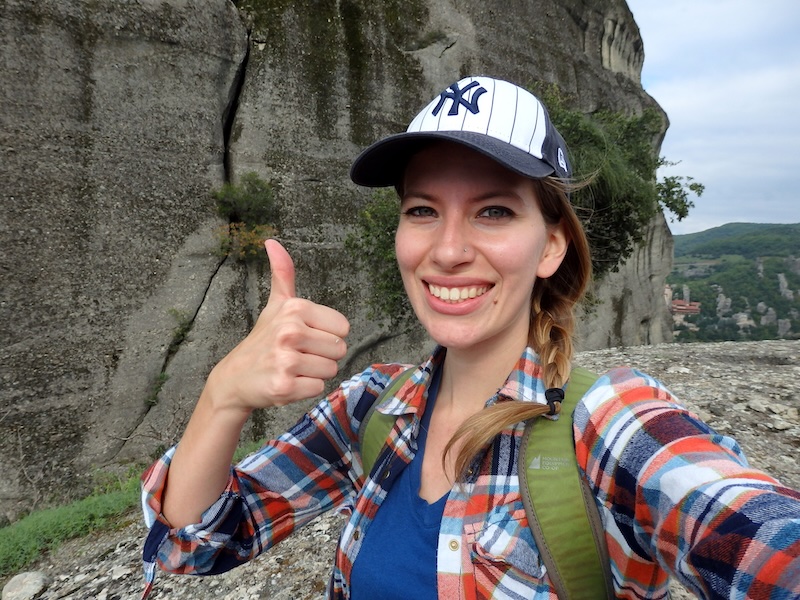
Sample 2‑Day Hiker’s Schedule (No Car Needed)
Day 1 – Rock Forest & Monastery Duo
- 07:30 — Espresso at Backpacker’s Café Kalambaka, pack feta‑spinach pies.
- 08:00 — Set out on the Pilgrim Path via Agia Triada steps.
- 10:45 — Arrive Great Meteoron; tour wine cellar, marvel at skull ossuary.
- 12:30 — Picnic beneath Ypapanti’s ivy‑draped façade.
- 15:00 — Descend Rock Forest loop past monk jail & scarf cave.
- 17:30 — Sunset platform at Psaropetra lookout (free).
- 20:00 — Dinner in Kastraki: grilled lamb chops & cold Mythos beer.
Day 2 – Holy Spirit Adventure & Wine Wind‑Down
- 09:00 — Start from Doupiani trailhead; scramble to Holy Spirit cave‑chapel.
- 11:15 — Optional via cordata to “Prison of the Dragoumenos” ledge (helmet).
- 13:30 — Return via Adrachti pinnacle, grab orange‑honey loukoumades in town.
- 16:00 — Bike or taxi to Ktima Tsilili vineyard; sip rosé + tsipouro flight.
- 19:00 — Back in Kalambaka, slow‑food feast of baked giant beans and spoon‑sweets at Meteora Restaurant (ask to tour the kitchen!).
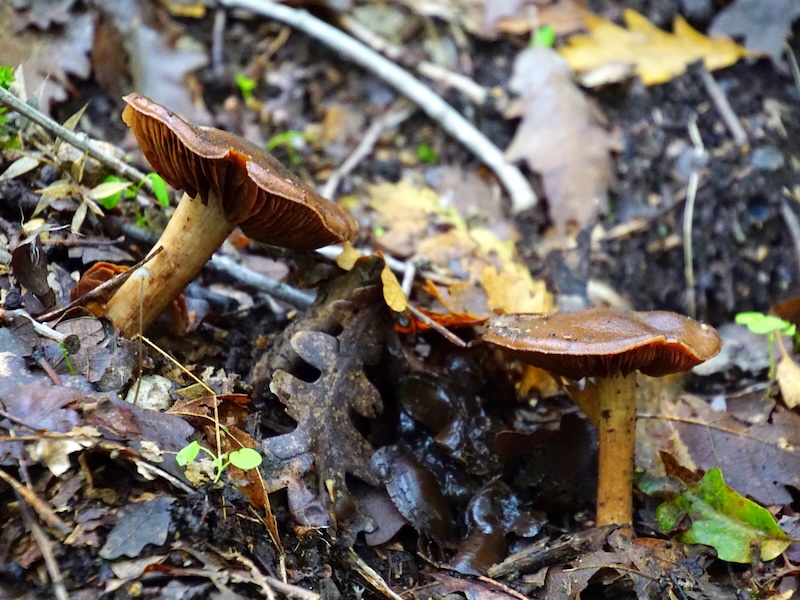
Handy Costs At A Glance
- Guided hike (4 h, small group) — €35
- One‑way taxi Kalambaka→Great Meteoron — €10 (bargain evening return)
- Monastery entry — €3 each; shoulders & knees covered, wrap skirt provided free.
- 1.5 L bottle of water kiosk — €0.70 (refill at taps inside monasteries).
- Post‑hike foot massage at Aelios Spa — €25 / 30 min bliss.
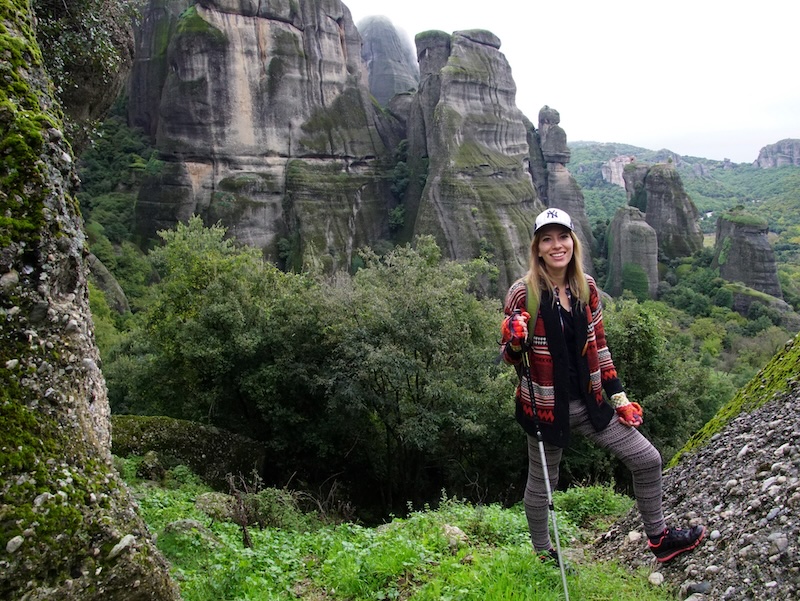
🌟 Final Thoughts: Hiking as a Window Into Meteora’s Soul
Pack your curiosity, lace up your boots, and set out to walk the same ground as monks, mystics, and storytellers before you.
Have you hiked in Meteora or uncovered any local legends along the way? Share your stories or hiking tips below—let’s keep the spirit of the Rock Forest alive!

Wonderful! I am greek so I have been there once when I was little and it is so amazing I still remember it although more than 10 years have already passed! Did you climb on any monastery? nice post!
xx
http://www.livealittle.gr
I’m glad you have good memories of your visit! It’s such a beautiful and fascinating place. I did get to visit the inside of Great Meteoro (the largest of the monasteries), but the others I viewed from the different vantage points.
This is fascinating thank-you. I’m so keen to get to Meteora! I explored some of a rock forest near Cerro de Pasco, Peru. The formations were totally different, but equally alien. I loved it!
Ooo, I’ll have to see if I can make it to Cerro de Pasco. I’m actually heading to Peru in January!
There was a job description recently for a monk hermit to take up a cliff top position in spain somewhere. The living conditions looked pretty good, but the number of tourists tripping round to view it, put me off!
Do come stay in my humble home! UK (South West)
xx Gar
You know, my guide was telling me that there are very few monks living in the monasteries of Meteora these days (some monasteries only have 1 resident monk!), and it’s because of the tourists. The first monks came looking peace and seclusion, and they purposely made it difficult for anyone to reach them, but these days there are countless visitors curious to see what the monasteries are like. How things have changed…
Not quite exactly like this, but when we were in Sapa, we shared and heard so many stories from our local guide. They were more stories of the region, her life and those of her family, but it was a fascinating experience nonetheless. This sounds like such a neat trip.
This is pretty fascinating! Love local myths and tales from places, though the story about the squatters being there for 89 years after — that’s wild. Seems like that stole themselves a pretty picturesque place! Love this post Audrey, the local stories mixed in with Meteora is really awesome!
Fun! I visited all the operating ones during my visit, but none of the ruined ones. Something for next time I guess!